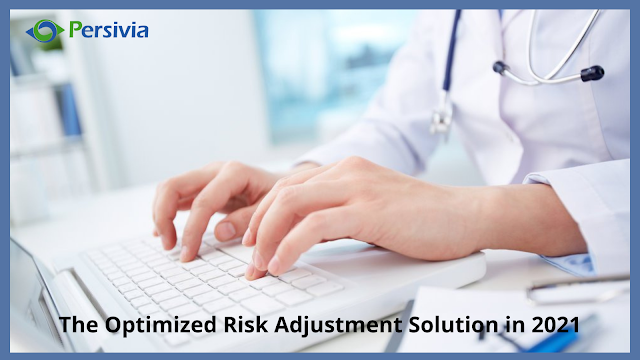The Optimized Risk Adjustment Solution in 2021
Risk Adjustment (RA) is a statistical approach that considers health coverage subscribers’ underlying health conditions and healthcare costs while analyzing healthcare outcomes or expenses. Risk Adjustment Solutions help in ensuring compliance, precise compensation for beneficiaries' risk costs.
The COVID-19 pandemic
levied a burden on the whole healthcare industry, particularly for the Risk
Adjustment. The upheaval caused by the pandemic resulted in negative
repercussions, including declines in preventative interactions such as yearly
health and wellbeing checkups. There are some positive outcomes as well, such
as the expansion of telehealth adoption among providers.
However, the year 2021
has shown a distinct potential to become a year of optimized risk adjustment.
With the implementation of the American Rescue Plan Act of 2021, Consolidated
Omnibus Budget Reconciliation Act (COBRA) constraints and rates have been
decreased and some are even removed. The legislation modifies various
healthcare insurance programs to broaden Medicaid subsidy-eligibility and
enhance government financial assistance for insurance plans while permitting
the Affordable Care Act (ACA) exchange an off-calendar second opportunity to
open.
Medicare Advantage (MA)
registration is surging, with 2.4 million new subscribers, a 9.9 percent
increase year on year, which further overlaps with the MA 2020 dates of service
(DOS) filing closing date extension. The first objective is to regulate income
and guarantee no gaps in the 2019-2020 population RAF. Another way to income
continuity is to work on detecting overlooked and under-coded variables that
might yield funding soon, for 2021 dates of service (DOS). Speculative
solutions, such as Lumanent Pre-Encounter Prep, a National Language Processing
(NLP) powered advanced Risk Adjustment Model, can be used when
patient numbers increase, detecting conditions overlooked in previous years and
not focusing solely on old RAF scores, but drilling down and increasing them.
Next, minimizing
excessive risk adjustment expenditure is critical, especially given its
position under MLR guidelines for payers. Optimize the efficiency and
productivity of the internal coding workforce using Lumanent Retrospective
Review. With a modular application suite, precise risk collection is possible.
Luminant Connect is a completely automated data retrieving solution that refers
to risk adjustment and can abolish this persistent risk while lowering
spending.
Lastly, Medicaid
Accountable Organizations (MAOs) must continue to monitor their risk adjustment
procedures to ensure precise diagnostic data submission. Conduct targeted
Hierarchical Condition Category (HCC Coding) evaluations for diseases
that are prone to documentation inaccuracies.
The Risk Adjustment
Value Assessment for each company is a unique statistics analysis. It
identifies which market segments, provider groups, and disease classifications
have the most potential, allowing for targeting priority that leads to a
considerable improvement in outcome measures over conventional methods.


.png)
Comments
Post a Comment
Please do not enter any spam link in the comment box